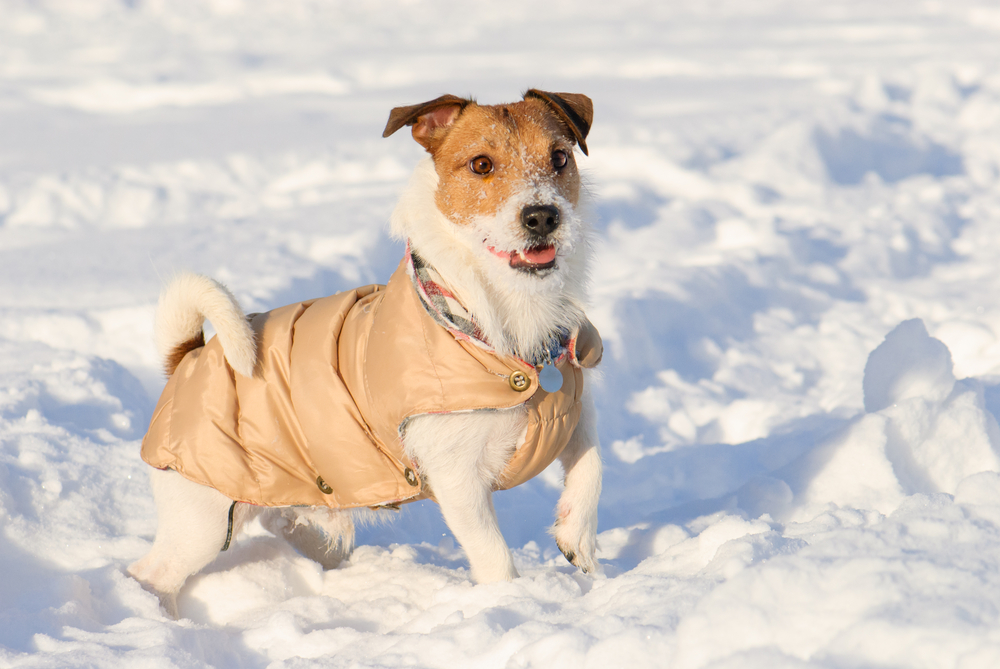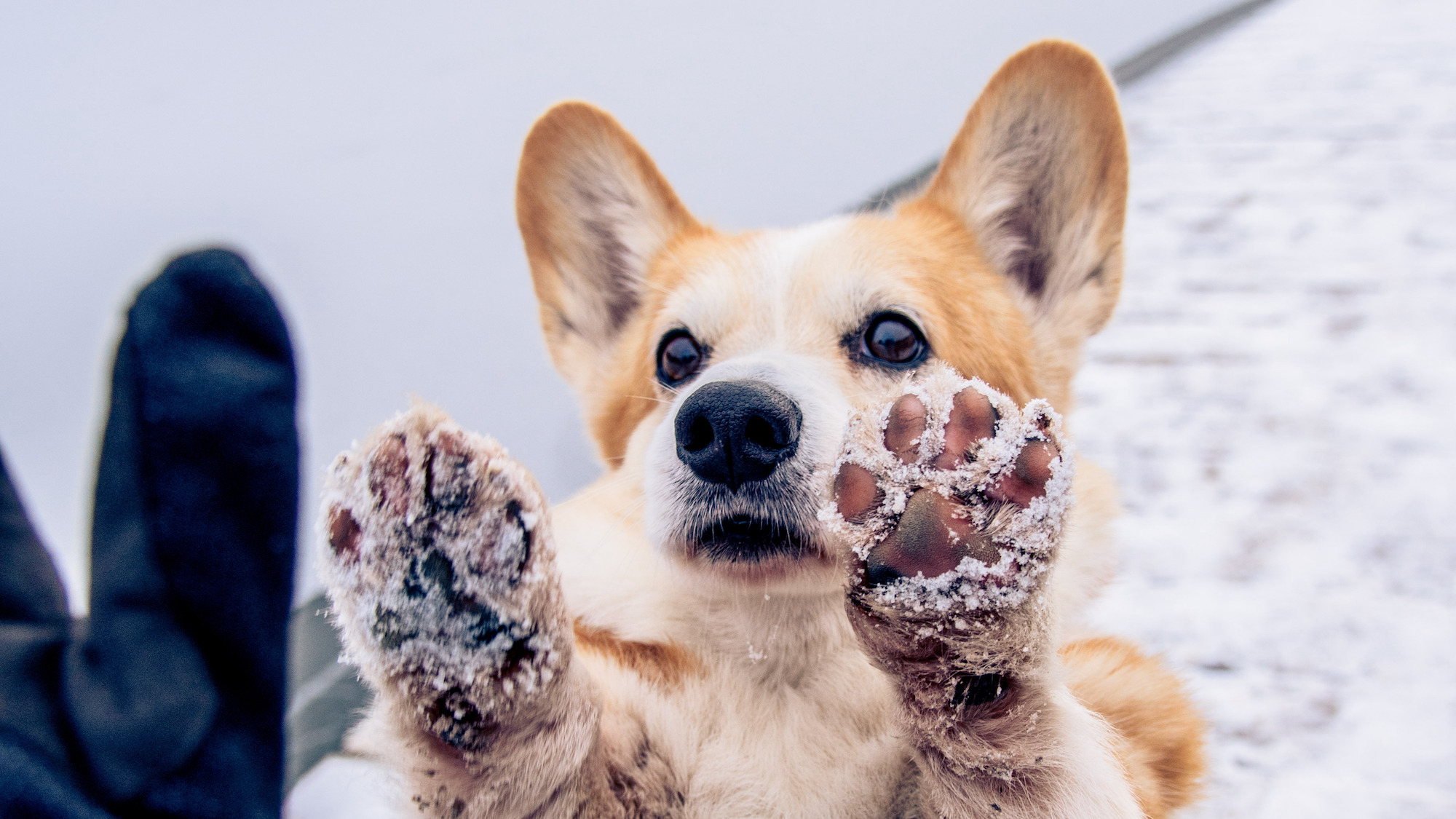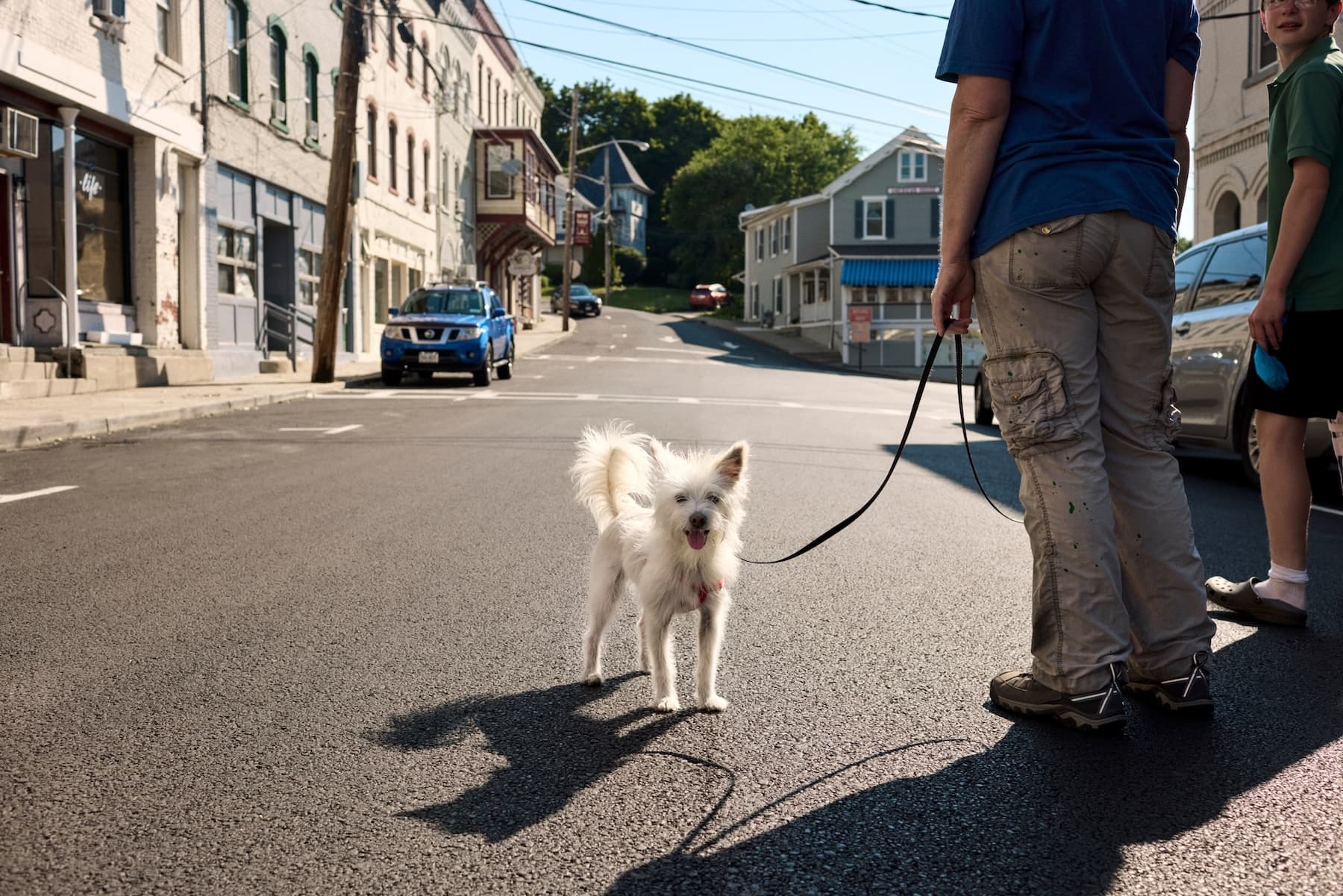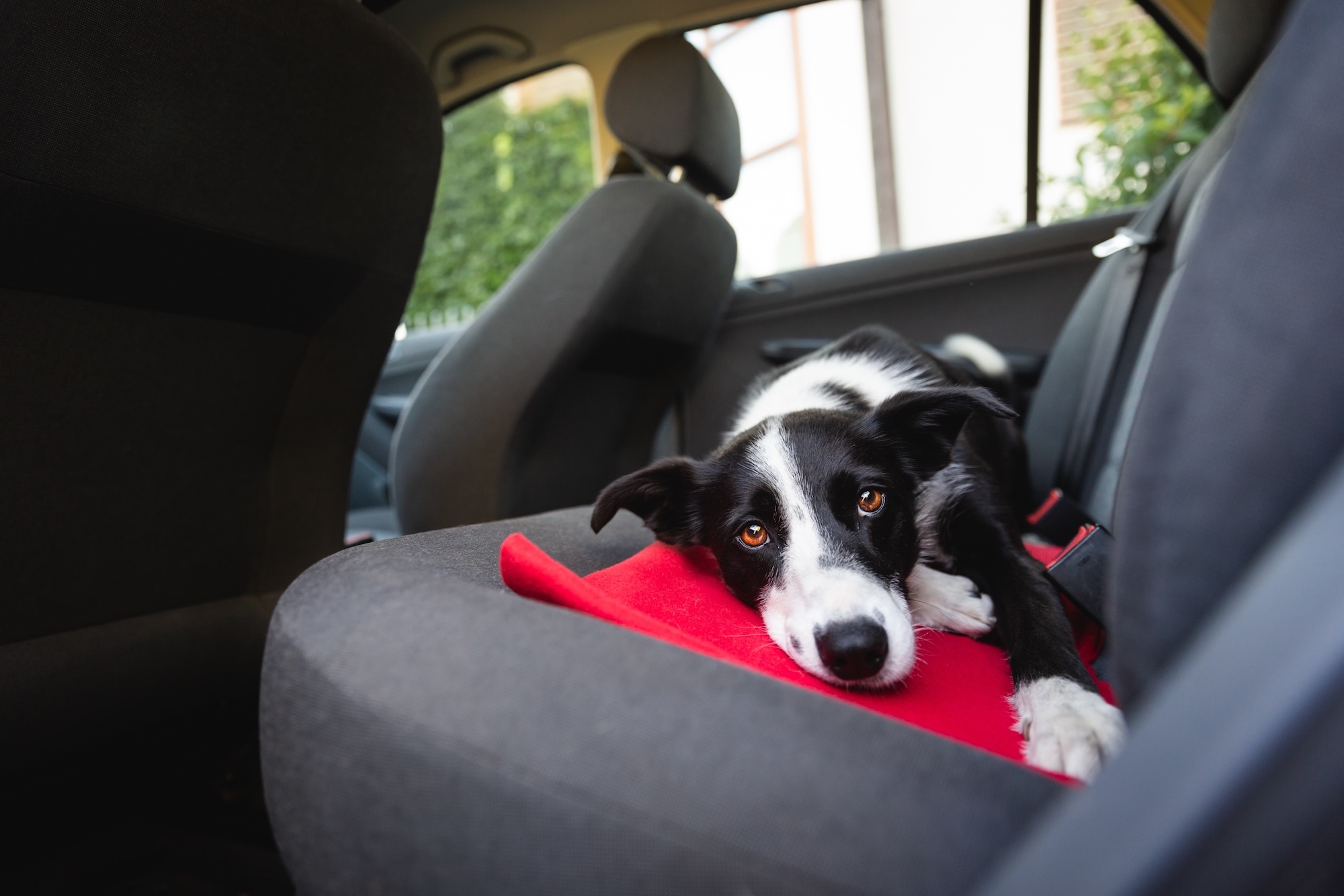Depending on where you live, the winter months can be challenging for pets in all kinds of ways. Some breeds love the snow and thrive in it—watch your husky living their best life when the ground is frozen—but others hesitate to go outside in colder climates, or may need a little extra seasonal TLC.
No matter the breed, or their attitude toward the elements, here’s how to keep your dog happy, comfortable, warm, and safe during wintertime.
Health & safety
If you have a short-haired dog, such as a beagle, pit bull, or French bulldog, or a lean-bodied dogs like a greyhound, and you live in an area with freezing or hazardous winter conditions, you should invest in a cozy, high-quality coat for them—preferably one with a waterproof outer layer and a fleece liner. It should fit snugly, but not so tight that it will restrict mobility. Just because your dog is long-haired doesn’t mean they couldn’t do with a winter coat, too. If you live in an area with whipping cold winds and icy blizzards, any dog could use extra protection, even if the coat is just saved for walks on the most brutal winter days. That said, it probably won’t be an essential item for certain large dogs with their own thick fur coats, such as the Alaskan Malamute or Great Pyrenees. Those breeds simply cannot get enough of cold weather.
Dogs that are low to the ground, such as dachshunds and corgis, could certainly do with a winter coat, as their bellies will brush up against snow and cause discomfort. Similarly, small or toy breeds such as Chihuahuas and Yorkshire terriers will need a coat because they can’t generate enough body heat on their own to stay comfortable outdoors, and need extra insulation.
As the days get shorter in winter, make sure you’re back home from a walk before it gets too dark, or bring a flashlight. In any case, consider buying a light-up or reflective collar to keep your dog as visible as possible, especially if your dog is playing off-leash in a dog park near sunset. And always make sure that tags have the most up-to-date contact information.
In general, keep in mind that just as it’s very dangerous to leave your dog unattended in a hot car during summertime, it’s also life-threatening in the winter months. Regardless of breed, never leave your dog alone in a cold car in winter, with the engine turned off, or tied up alone on a leash outside, even for what you think will be just a few minutes. Your dog can freeze to death. Either bring them inside with you while you run errands, or leave them at home, safe and warm.
Especially if you live in an area prone to blizzard conditions, be sure to keep spare blankets on hand for your dog. Also, make sure your dog has a nice warm bed, and that the room they sleep in is kept at a comfortable temperature.
If you live in a rural area, winter can bring power outages and icy, impassable roads. It’s a good idea to keep a pet first-aid kit at home. This could include cotton balls, bandages, gauze pads, antibacterial ointment, and anti-diarrhea medicine, but consult with your vet about what you should have.
And if your dog is on medication(s), stock up on an ample supply at home, just in case you’re unable to get refills during a snowstorm or other extreme conditions. Your dog’s life may depend on it.

Exercise
While we might be tempted to stay cozy indoors when the weather gets cold, our dogs need to go outside daily, keep up their regular routines, and get lots of exercise to stay healthy. Depending on the breed, some dogs may not be able to do as much running around as they do in warmer months, so weight gain may be an issue. Yet others love frolicking in fresh snow and will have no trouble keeping up their activity levels. You can gauge what’s best by seeing how your dog responds in cold weather: if they’re eager to get outside—and even trying to herd you into a walk—they’re perfectly happy to walk as long as you will (so bundle up!). If your dog seems to hesitate before going out, even with a coat, then you could try walks that are more frequent, but briefer, to keep up exercise while ensuring they’re comfortable. Sometimes bringing an extra treat or two is a good way to coax your dog outdoors.
How long is it safe for your dog to be out on a walk in winter? That depends on the breed and the temperature. But when temps dip below freezing (32 degrees Fahrenheit), you should stick to quick walks for most dogs: limit outdoor time to just 10 or 15 minutes. As is true for people, dogs can suffer frostbite or hypothermia, so pay attention to shivering. And if you have a geriatric dog, be even more cautious: senior dogs are less able to regulate body temperature and far more vulnerable to harsh conditions. They may be coping with arthritis, which makes walking in cold weather extremely painful and results in a stiffer gait. Don’t take any chances.
There’s one simple way to keep up exercise when you can’t go out as often (or for as long) with your dog—keep them active indoors as much as you can. Mental stimulation is also key for preventing boredom, along with unwanted behaviors such as whining, barking, or chewing on furniture.
If you have enough space in your home, try to set aside time throughout the day for rounds of tug with a rope toy—a great way to work off excess energy—or fetching games to keep your dog moving and happy. You can toss a ball down a hallway (preferably carpeted, and nowhere near stairs).
Also, make sure they have plenty of toys to keep them occupied on their own, such as a treat-dispensing toy, or some other kind of puzzle toy that makes them “work” for a treat. Another fun activity is to scatter treats around the house for your dog to find, such as in their bed, under sofa cushions, or inside their toy crate. They’ll enjoy searching for and excavating their treats. If weight is a concern and you don’t want to use food, you can play the same game by hiding some of their favorite toys around the house.
Having more indoor time is also an opportunity to work on training, whether teaching a dog new tricks or refreshing old ones. Practicing commands such as sit, stay, leave it, and more is both mentally stimulating and tiring for your dog—in a good way, as it keeps them engaged when they can’t explore things outside as much.
Paw care
You may have their back covered, but don’t forget to take care of your dog’s paws in cold weather, too. Dogs’s paws actually have an amazing design that allows them to tolerate the cold— researchers have discovered they have a special kind of circulatory system that keeps feet from freezing, and helps keep their body warm, too. But there are limits. Not all dogs can comfortably or safely stand freezing conditions, and all dogs’ paws should be protected from too much exposure to snow, ice, slush, and freezing temperatures.
Ensure that paws are well-groomed by trimming excess fur between your dog’s paw pads, which helps keep snow and ice from accumulating. It’s extremely painful when dogs get snow or ice lodged between their toes—and dry, cracked paws can become very rough or even bleed in harsh weather.
Plus, rock salt and grit from roads and sidewalks are quite harmful. Always keep a towel by the front door in wintertime, and as soon as you return from a walk, examine the paws for signs of irritation and wipe them off thoroughly until they’re clean and dry.
If dogs walk on urban sidewalks with chemical de-icers that aren’t pet-friendly, and lick their paws after a walk, they’ll ingest these chemicals, which can cause vomiting or diarrhea (and can even be fatal). Common ice melts such as calcium chloride and sodium chloride are toxic if licked, and very irritating to paw pads. Always wipe down your dog’s paws carefully after a snowy or icy walk, and rinse paws if necessary to eliminate rock salt, grit, and chemical melting agents. Few dogs enjoy this task, so you might want to keep a few treats handy.
If you live in a house and are responsible for de-icing your sidewalk or driveway, try using dirt or wood ash, or simply shoveling. You could also buy dog-friendly ice melts that aren’t toxic.
To protect your dog’s paws, you can buy rubber booties, but many dogs have trouble tolerating them. Alternatively, there are nontoxic balms and wax products you can find online or at your local pet store. But just know that booties are unbeatable as protective barriers for paws (however much your dog dislikes wearing them). You can enlist your dog in “boot camp” to get them accustomed by following these simple tips:
- Slowly introduce your dog to the feel of the boots, first touching them to the paws while offering rewards, then putting on one boot at a time.
- After putting on each boot, praise your dog lavishly to reinforce the positive experience of wearing them, and maybe hand out a treat or two.
- Once all four boots are on, let your dog walk around the house for just a few minutes while praising them. Keep practicing this, adding on a bit more time in each subsequent session. Soon you’ll transition to taking them outside in their booties.
Feeding
Maintaining a healthy weight in winter may be more challenging for your dog, when caloric needs may change. Talk with your vet about whether you need to adjust your dog’s portions and ask what else you can do to ensure that your dog doesn’t gain excess weight. You’ll want to make sure nutritional needs are met without overfeeding. Also, keep an eye on how many treats you’re giving your dog if they’re less active.
Keep in mind that dogs with a thin coat and low body fat may actually need more calories during winter to maintain their body heat, as will breeds that are highly active outdoors in colder months. A fresh-food plan that’s personalized to your dog’s needs allows you to adjust their daily portions as their needs change.
If you have any questions about winter safety, health, and happiness for your particular pup, be sure to talk with your vet.





